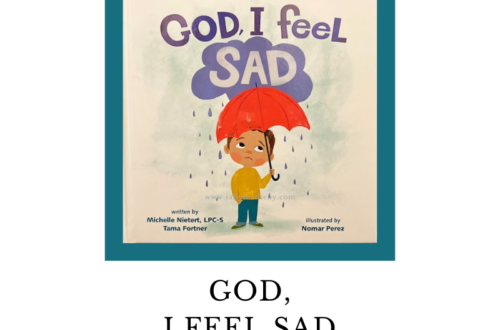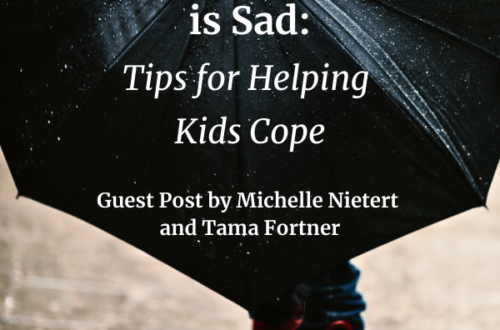
Homeschooling: Answering Your Questions (Part Two)
by Sally Matheny
Even though homeschooling is a widely accepted educational alternative, people still have lots of questions–especially those who are considering taking the leap. In an earlier post about homeschooling, I answered some frequently asked questions. This post is part two of answering questions I often receive about homeschooling.
How rapidly is home education growing? Almost 2 million students were homeschooled in the United States during 2002-2003.* The growth rate is 7% to 15% per year, according to Dr. Brian Ray, president of the National Home Education Research Institute (Worldwide Guide to Homeschooling).
How my Family Came to Homeschool
After teaching nine years in the public-school system, I came home to stay with my toddlers. When they began going to school, the majority of the time they had great experiences.
However, after they came home from school each day, there was barely time for a snack, homework, and a family meal before it was time to get them ready for bed. Then, we’d do it all over again the next day.
We longed to have more time with them. After our oldest daughter completed the first grade and our youngest completed a year of kindergarten, we decided to try homeschooling.
I thought I’d only homeschool until they reached middle school. And even though we had some rough spots, we all loved the benefits of homeschooling. Tailoring an education to each child’s strengths, weaknesses, and for their individual styles of learning has been amazing.
The greatest blessing, although challenging at times, has been the ability to be there to teach their hearts along the way.
We homeschooled the girls all the way through high school. They went on to graduate with honors from two different colleges.
Now, we’re homeschooling our boy which is a whole, new ballgame!

Answering Your Homeschooling Questions
Even after eighteen years of homeschooling, sometimes I still feel like I’m learning my way. But I am a lot more relaxed now than I was during those first few years of homeschooling.
Numerous people come to me with their homeschooling questions. Many parents long to teach their children, and even their grandchildren, at home but they have fears of inadequacy.
I want to encourage you today by answering more of your questions and providing you with a list of helpful resources.
What are the legal requirements for homeschooling?
Homeschooling is legal in all fifty states. Detailed requirements vary from state to state. Your state’s Department of Non-Public Education website as well as the Home School Legal Defense Association can answer all your legal questions.
No matter what state you live in, you must file your intent of homeschooling with the Department of Education before you pull your child out of the public-school system. If your child has never entered the public-school system, then check with your state laws about when to register them as a homeschooled student. The age to register a child in N.C. is age seven, but it varies in other states.
As of this writing, in Georgia, parents must write an annual progress report for each child and retain it each year.
In New York, a detailed list of subjects, syllabi, curriculum materials, and a record of hours spent learning are mandatory.
Academic evaluations also vary. Standardized testing doesn’t begin until third grade in Georgia and is only required every three years.
In my state of North Carolina, standardized tests are required every year beginning at age seven.
What should I teach?
Most states suggest 180 days of instruction. Most states require an attendance record to be kept on file each year of homeschooling. Bear in mind, homeschooling a few children takes far less time than what’s usually needed to teach a class of twenty-five students.
Some states are flexible about what and when you teach. Other states are very specific on which subjects should be taught in each grade.
It’s imperative to research and follow the laws of your state.
How much does it cost to homeschool?
It’s amazing how many times I hear this question! And there’s no set answer for it. Some parents spend very little. They use resources they already have, borrow books and supplies, or download free materials on-line.
Others choose packaged curriculum that includes everything but the kitchen sink. Packaged curriculum bundles are pricey and can run between $500 – $1,000, or more.
My family aims for the mid-range. I try to borrow as many books as possible from friends and the library. I hit the used book sales, in communities and online, for great bargains. When my children were in grades K- 3, I found a variety of good workbooks and reading books at dollar stores.
I have bought new curriculum from publishers as well. In addition, we purchased a microscope, maps, science kits, and cool stuff like that.
I’ve read that the average homeschool family spends about $900 per student each year. We don’t spend anywhere near that. Most of my friends don’t spend that much. I think when our kids were in grades K-2, we probably spent about $75 each on them. As they progressed through the grades, we spent more. We did more science experiments, field trips, and activities.
Then, during the high school years, we paid for a science tutor and for dual enrollment classes at the community college.
Also, many homeschoolers love bartering. One of our daughters taught horseback riding lessons to the daughters of a biology major in exchange for her tutoring services in chemistry.
Buying curriculum is like buying groceries. Brands and prices vary. How much you will need is based on the ones you’re feeding. But with wise planning and saving, plus frugal shopping, you can obtain plenty of fulfilling products.
What curriculum do you use?
Besides the Bible and great literature books, we’ve used an eclectic mix of curriculum. It’s interesting that our favorites begin with the letter A:
A Beka, A Reason for Spelling/Science, Answers in Genesis, and Apologia. We also enjoyBJU Press, Institute for Excellence in Writing, Veritas Press, and others.
But just because these have worked well for my kids, doesn’t mean they are the best ones for yours. It takes time to research, try out, and discover what works best with each child.
One of my daughters panicked when she saw the problems in a Saxon math book. I had to find a book with more colorful graphics sprinkled in instead of an entire page of problems. When she was in the tenth grade, she loved an intensive literature and essay-writing curriculum, which would have sent her sister bolting for the door!
One of the nice things about homeschooling is the opportunity to find what curriculum works best with each child’s learning style.
Occasionally, my daughters needed something unique for their needs, but most of the time they were able to use the same curriculum.
Do you need to set up a “classroom” area?
During our first few years of homeschooling, all of our supplies were stored on a microwave cart and most of our homeschooling was done at the dining room table.
But after numerous years of homeschooling, we have accumulated a great number of books! Now, we’re blessed to have a small area at the top of our stairs where we store most of our books and educational materials. We have desks, computers, maps and charts there. While this is nice, we only spend about half of our school time in this room.
We love to curl up on the sofa to do our morning devotions together followed by the literature reading assignment for the day. My kids have done their schoolwork sitting on pillows in the bathtub, in a tent, or a homemade fort (outside and inside). We do science in the kitchen and math on the living room floor. We also learn a great deal outside the walls of our home.
How Do You Savor the Moments?
Bearing the responsibility of your child’s education is enormous. It should be taken seriously, but don’t forget to have fun. Provide opportunities that instill a joy for learning. Savor the moments you have with your children.
How? Consider letting go of what the world thinks a teaching environment should look like. Relax in the freedom of homeschooling and the journey will be more enjoyable.
When I first began homeschooling, I thought we would do it only for a few years. With each passing year, I stand amazed at how God continues to work in our homeschool despite my shortcomings.
Even after all this time, there are days I still question my abilities, and occasionally my sanity! It’s necessary for me continually pray for God’s wisdom and help in our homeschooling efforts. God has never let me down. He provides, equips and meets all our needs. I give Him my concerns and that frees my mind up to savor the moments I have with my family.
What If I Have More Homeschooling Questions?
There are more resources available now than when I first began homeschooling back in 2000. Here are just a few to get you started:
North Carolina Home Educators Association
Homeschool Giveaways
And there’s tons of educational material on Pinterest!
You many also enjoy reading posts from other homeschool moms at Homeschool Blog and Tell.
*Brian D. Ray, Ph.D., Facts on Homeschoooling (refers to students in grades K-12).





